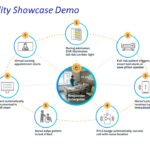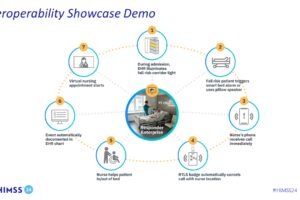 The following is a guest article by Christopher Larkin, Chief Product and Technology Officer at Concord Technologies.
The following is a guest article by Christopher Larkin, Chief Product and Technology Officer at Concord Technologies.
Artificial intelligence (AI) is pervasive in our daily decisions. We are assisted by AI-powered solutions that map optimal travel routes, deliver targeted online search results, manage vital banking functions, and even guide our driving.
Healthcare is another area that has become increasingly influenced using data and algorithms that make human-like conclusions. While much of medicine was once bogged down by legacy systems and paper files, the widespread digitization of records has streamlined processes and enabled the development of technology that can search documents for meaningful information.
While computers can access data and learn from it, it is vital that medicine does not solely rely on AI to do the actual making of decisions. To improve the provision of medical care, AI must be paired optimally with human intuition. Data empowers clinicians and other healthcare decision-makers to better manage a variety of dynamic conditions and solve complex challenges. It is a partnership that has begun to yield significant results.
Scaling Decisions
Today’s value-based care environment requires scalable solutions that enable repeatable, consistent, and effective decision-making. Data, tools and reporting solutions that leverage AI can have a significant impact on both clinical outcomes and operations at healthcare facilities. That’s because properly established AI can quickly scour thousands of patient medical records, flagging data about previous findings, comorbid conditions, drug interactions or COVID status, to name a few. When AI is used to draw attention to vital information and clinicians are notified as part of the workflow, diagnoses and treatment paths can be enhanced and hastened.
From a logistical standpoint, many healthcare providers are faced with admission decisions for dozens (or more) patients daily. The decision to admit a patient to provide the exact care he needs in the current circumstances — or instead refer them to another facility — has major implications for a provider’s bottom line. AI can serve as an aid by providing relevant information about the nature of the patient in question, the number of beds available and/or staffing resources. The right data at the right time facilitates an easier decision here as well, one that can scale to improve the management of patient volumes.
Identifying Patterns
AI is also very effective at looking for patterns among a lot of data. An efficient healthcare system will not solely rely on humans to do what machines can do much quicker. One example of productivity enhancement is the application of AI and vision technology in pathology, which can flag abnormal cells in a giant sea of healthy ones. Similarly, AI can spot biomarkers of cancerous tumors on lung scans. Once the AI is appropriately trained on both the characteristics of non-threatening tumors and cancerous ones, the machine can draw attention to areas of concern, with a physician making the final decision on a patient’s next steps.
The digitization of records also has led to an emergent field of study: in-depth analysis of patient records over longer timeframes. Machines can detect patterns and find connections in vast amounts of data and can do so even for data spanning many years. If connections are established across various patient populations, there’s the potential opportunity to predict disease before it occurs, a more advanced AI application. As researchers and clinicians gain access to more data from more patient records, predictive assessments can occur for conditions that would have taken years to emerge.
Valuing Intuition
It is essential to recognize that while healthcare data holds weight, the intuition that arises from human training and experience cannot be discounted. AI technology, for example, is used to guide prediction of heart disease based on body mass index, waist circumference and other risk factors relating to blood pressure and cholesterol levels; occasionally, the data falsely categorizes a patient as healthy, or not at risk for a cardiac event. However, the physician will observe if a patient is unfit, unwell, or exhibiting other signs of risk, overriding the calculation of a “heart healthy” patient. The algorithm is generally helpful in drawing attention to key data points, but the clinician’s assessment embodies the full context of patient health — a reminder of the true “high-touch” nature of medicine.
In another example, documented in Charles Graeber’s The Breakthrough, researchers were set to cancel an immunotherapy clinical trial for a checkpoint inhibitor that seemed to demonstrate an inability to fight cancer. The data showed the tumors were not getting smaller, but rather growing. One of the doctors simply asked trial patients how they were feeling, and responses were positive. He intuited that the drug was perhaps helping them, followed up with questions to gain additional insight and ultimately uncovered that the tumors were actually growing with cancer-fighting T-cells, not cancer cells. Intuition led him to ask patients that basic question, and their responses helped elucidate the real results. The trial went on, resulting in approval of a new drug now used regularly to fight solid tumor cancers.
As we move toward the next frontier of medical care, it is likely that neither AI nor human decision-making will function independently. Unlike other industries where AI can perform all the processes of a human counterpart, healthcare requires the knowledge, experience and intuition that experienced practitioners bring. Properly deployed, AI will further lessen the cost of healthcare while promoting the efficiency and effectiveness of decisions made by those medically trained clinicians.













